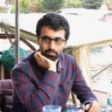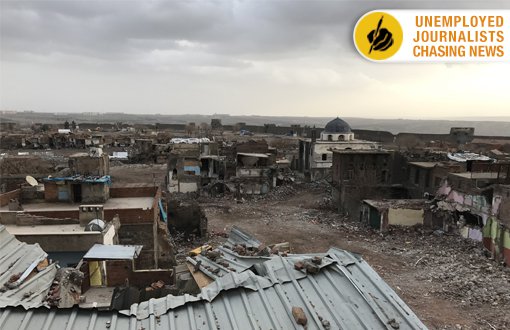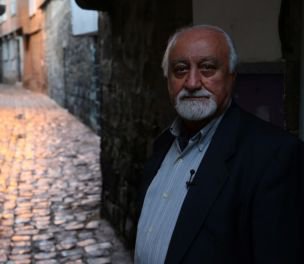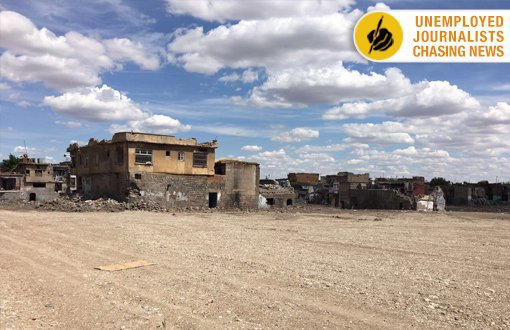Click to read the article in Turkish and Kurdish
In its December 9, 2009 session, Sur Municipality Assembly decided to change the name of Direkçi street to “Mıgırdiç Margosyan.” The mayor of Sur at the time,Abdullah Demirbaş, who installed the street signs, in his statement to journalists said that Diyarbakır is a multicultural, multilingual and multi-faith city and it lived in peace and harmony with this cultural richness in the past.
This step was seen as positive to have peace and harmony again, and Sur Municipality’s multi-lingual works were received favorably by the public. However, Mıgırdiç Margosyan objected to street being named after him due to his belief that the mindset in Turkey hasn’t changed, that the steps taken today may be invalidated in the future and that his name might be taken down from where it is hung.
The events have proved Margosyan right
Not only was his name was taken down from the street, but Mıgırdiç Margosyan Street was replaced with razed, empty land as a result of the clashes that started with the curfews that were declared in December 2015. They lasted for 103 days, and the destruction has been continuing since March 10, 2016.
We met with Margosyan to speak about both of these incidents and how life was on the streets of Sur.
From “Direkçi” to Margosyan
Suriçi is an old Armenian settlement and you were a resident there. Could you tell us a bit about Suriçi, Gavur neighborhood, what kind of place it is in the memory of Armenians?
Now when we refer to Suriçi as district of Diyarbakır, we should know that Diyarbakır itself was Suriçi. Later, buildings were constructed outside of the ramparts, but they have nothing to do with Diyarbakır. Where Armenians predominantly live is Xançepek, also known as Gavur neighborhood. As the name suggests, Gavur neighborhood was a neighborhood in which minorities and non-Muslims lived, known as giaour. Diyarbakır was hosting Christians, Giaours, Armenians, Assyrians, and here and there Chaldeans, and of course Muslims until the 1950s…
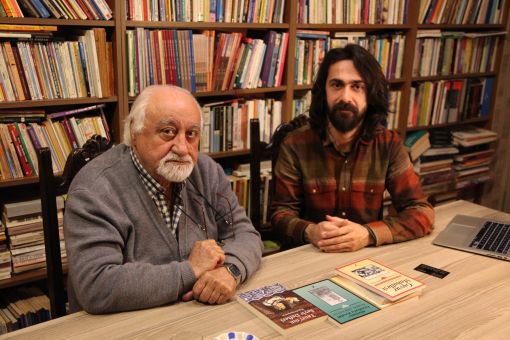
There was such a harmonious life. What was special about Gavur neighborhood was that most of the people were artisans: blacksmiths, jewellers, tinners, coppersmiths, etc. All these artisans were living together. When Armenians came together, of course there was no TV in those times, they talked about each other. They were usually referring to each other as follows: Where were you at “Kafle”? “Kafle” is the people who migrate in convoys. The words like, “Genocide”, “Deportation,” were not used in Diyarbakır; everyone used the word kafle. When they talked among themselves, we children sat by the heating stove and ate walnuts. Life was like that in those times.
Suriçi, Gavur neighborhood represents a form of solidarity. This is also a place subjected to attacks throughout history. What does this tell us?
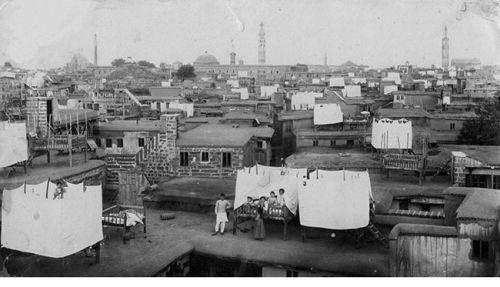
About Mıgırdiç Margosyan Margosyan was born in Hançepek neighborhood (Gavur neighborhood) on December 23, 1938. He received his education at Süleyman Nazif Primary School, Bezcivan Secondary School in İstanbul and Getronagan High School. He graduated from İstanbul University, Department of Philosophy at the Faculty of Literature. He served as principal at Surp Haç Tıbrevank Armenian High School in Üsküdar between 1966-1972 in addition to teaching philosophy, psychology, Armenian language and literature. A part of his stories in Armenian published in Marmara newspaper were published as a book titled “Mer Ayt Goğmerı” [Our Neighborhood]. With this book he was granted the Eliz Kavukçuyan Prize in Literature (Paris-France), which is only bestowed upon authors writing in Armenian. His books in Turkish titled “Gavur Mahallesi” [Gavur Neighborhood], “Söyle Margos Nerelisen?” [Tell Me Margos Where are You From?], and “Biletimiz İstanbul’a Kesildi” [Our Tickets were Sold for İstanbul] were followed by his second Armenian book, “Dikrisi Aperen” [From the Sides of Tigris]. “Gavur Mahallesi” was published in Kurdish by Avesta Publications with the title “Li Ha Me, Li Wan Deran” [Our Neighborhood]. |
You cannot find flat streets in Diyarbakır, maybe that is the specialty of these houses. The houses were built in a way to be warm in winter and chilly in summer. The houses used to have dam rooftops in early days. The houses were adjacent to each other and people were passing from one house to another through the dam. Perhaps you know that there are two types of basalts in Diyarbakır; male stone and female stone. Yards were built with the female stones. Those stones were perforated, when you dabbled on the surface to clean it, some water was left in it, which was cooling the area. Arched houses and arched iwans that placed side by side with stones carved one by one gave Diyarbakır an architectural style. And 80%-90% of those who built them were Armenian stone masons. My father was one of them.
A street in Gavur neighborhood was named after you in 2010. You say in one of your interviews that you didn’t want the street to be named after you. Why did you oppose this?
I went there frequently concerning the restoration of the Armenian Church. I was being invited due to the books I wrote. People heard about me because of the books about Diyarbakır. Our friends working at the municipality then brought me this offer as a gesture and due to the efforts we made for Diyarbakır. “We want to name the street where you live after you,” they said. I responded “People might think that, if the mindset changes, whether they are right or wrong, the name may not be wanted anymore.” It is not really important for me to have my name there. I don’t want this because if that name is taken down from there after 3 or 30 years, it will be a pity for both you and me. One day, they put my name there but it is not there anymore. I had foreseen this. It is not really important if my name is still there or not. I wish it carried its previous name, Direkçi street but still hosted a couple of Giaours, yet, there are none left today.
Did you have any chance to see Diyarbakır, Gavur neighborhood’s latest situation or Mıgırdiç Margosyan street after the destruction?
I went to Diyarbakır but didn't have the chance to see because it was not allowed to enter and I believe it still isn't allowed. That is why I couldn't see the street. Indeed, I'd like to go and see at the first opportunity and I guess I will deeply suffer.

We were able to go and see, and we took photos. We’d like to show them to you. In one of your interviews, there was this headline, “Tell me Margosyan Where are You From?” If we ask you “Tell Me Margosyan Where is Your Street?”, could you show the street to us?
I cannot see (He is looking at the photos of the destroyed neighborhood) because the streets are gone now. I see something like a tract or a wide road here. I know Suriçi like the palm of my hand. In the past, I knew where there was a fountain, a bakery shop; I knew all except the grain mills but I would probably get lost now if I go there now.
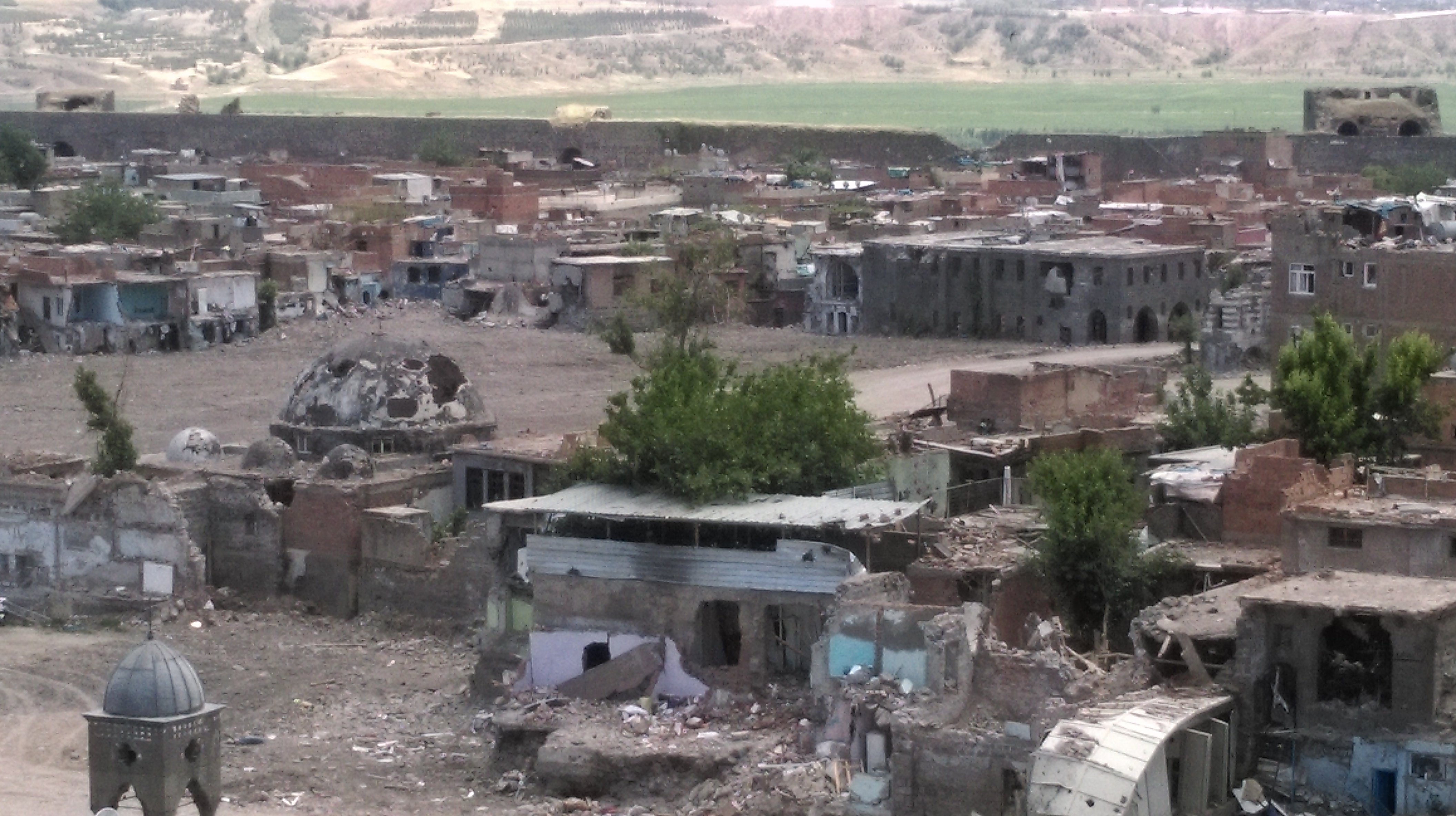
This is the street which was named after you
(He is looking at the photos of demolished streets) Yes. Its name and itself are both gone…I didn’t know it would be that bad to be honest. Can you find your house if you go to this street of which you know every corner, every nook and cranny? It is impossible because nothing is left. It turned into a football field.
Unfortunately, yes. Street tales, Gavur neighborhood, that lively life you told in your books have been turned into this. Let us show you some images now.
(He is pointing to the belfry of a surviving church). The last maintenance was made, it didn’t have a tower before. Earlier, it had a belfry. The belfry of this church was demolished with the artillery fired from the inner fortress in 1915 or 1912 or 1913 because it was higher than the minaret. The Armenians were forcibly displaced from here starting from 1915. Is it desired that the remaining Armenian traces are wiped away? There is already nothing left from the Armenians. The stone constructions, the stone masons I mentioned above…Not just architecture but also that culture disappeared. You can build modern buildings as a substitution to those buildings but it is no longer the Diyarbakır that I narrated in my books. Once our PM had said something like that they would turn this place into Toledo. Turning this place to Toledo is not a solution.

Is it possible to create Toledo out of Sur?
Nothing can be created out of Sur. Only this fake structure can be created out of Sur and this fakeness can never reflect Diyarbakır’s historical fabric of thousands of years. Maybe some brand new houses will be built, but what about the people who live there? What about the culture in which people have lived for years? Where is that cooperation, solidarity, spirit? That won’t exist.
Finally, what needs to be done next? Do you have any suggestions?
We shouldn’t restrict ourselves to the matter of houses in or around Sur but we should talk about a full democracy. If a democratic mindset doesn’t rule and a uniform lifestyle is imposed, it will keep facing reaction. We are losing time. It can be achieved in an environment in which people can speak their opinions freely in a democratic society. What needs to be done next in our country is to establish democracy, democracy, democracy no matter what.
UN report: An apocalyptic Picture"The United Nations (UN) in its report described the operations carried out in the region, especially in Şırnak, Cizre, Nusaybin, Sur and Silopi, as “an apocalyptic picture”. The 26-page report concerning the rights violations that took place between July 2015-December 2016, which has been released on UN’s official website, includes “information about the massive destruction caused by the operations launched by the government’s security forces and the people killed, and details concerning other rights violations”. According to the report, over 30 towns suffered during the operations, and between 335,000 and 1 million people consisting of predominantly Kurdish people were displaced. The UN also released the photos taken by satellite of destroyed areas in Sur district. Please click here to reach the full report. |
HDP report: “Cultural Heritage” has been turned into ruinPeoples’ Democratic Party (HDP), in its report on Sur that it released after the operations ended, stated that 90 civilians and 71 security officers lost their lives, and the historical structures inside the urban protected area were destroyed. In the report, Sur is defined as “Diyarbakır’s heart in terms of cultural, social, economical and historical context.” The report discusses the events that took place in the region before and after the last curfew, and what has been experienced in the areas in which curfew was lifted. |
Amnesty: 500,000 people were forced to migrateIn its report delivered in 2016, Amnesty declared that over 500,000 people were forcefully displaced. The report was titled "The People Who Were Forcefully Displaced and Dispossessed: Sur Residents' Right to Return to Their Home," and said an "estimated half a million people including tens of thousands of residents of Sur, which has the UNESCO World Heritage statue, were forced to leave their homes as a result of the Turkish authorities' merciless crackdowns in the recent year." 500,000 people were forced to migrate in Turkey, according to the report. |
(OA-ZK/NU/HK)
Tomorrow: Trans Rights
***
UNEMPLOYED JOURNALISTS CHASING NEWS
1- Even Though They Speak Through Their New “Occupations,” They Are Journalists
2- Journalism is Banned under theState of Emergency
3- Germany: New Generation Diaspora/Kopuntu
4- Germany: Immigration of the Suffocated
5- The Organization that Made "The Arab Girl Looks from the Window"
6- How They Work/Cannot Work, Breaking Down the Stereotypes
7- They Marry White People to Avoid Discrimination
8- Private Rehabilitation Centers and Problems: The Example of Bingöl
9- Two Directors Discuss the “Educational Support for People with Disabilities” Practices
10- Students and Parents from Bingöl Tell of Their Experiences
11- 'Solution is Inclusion System in Education for People with Disabilities'
* The "Unemployed Journalists Chasing News" project is being realized with the financial support of Matra-Human Rights Program of Consulate General of the Kingdom of the Netherlands.




